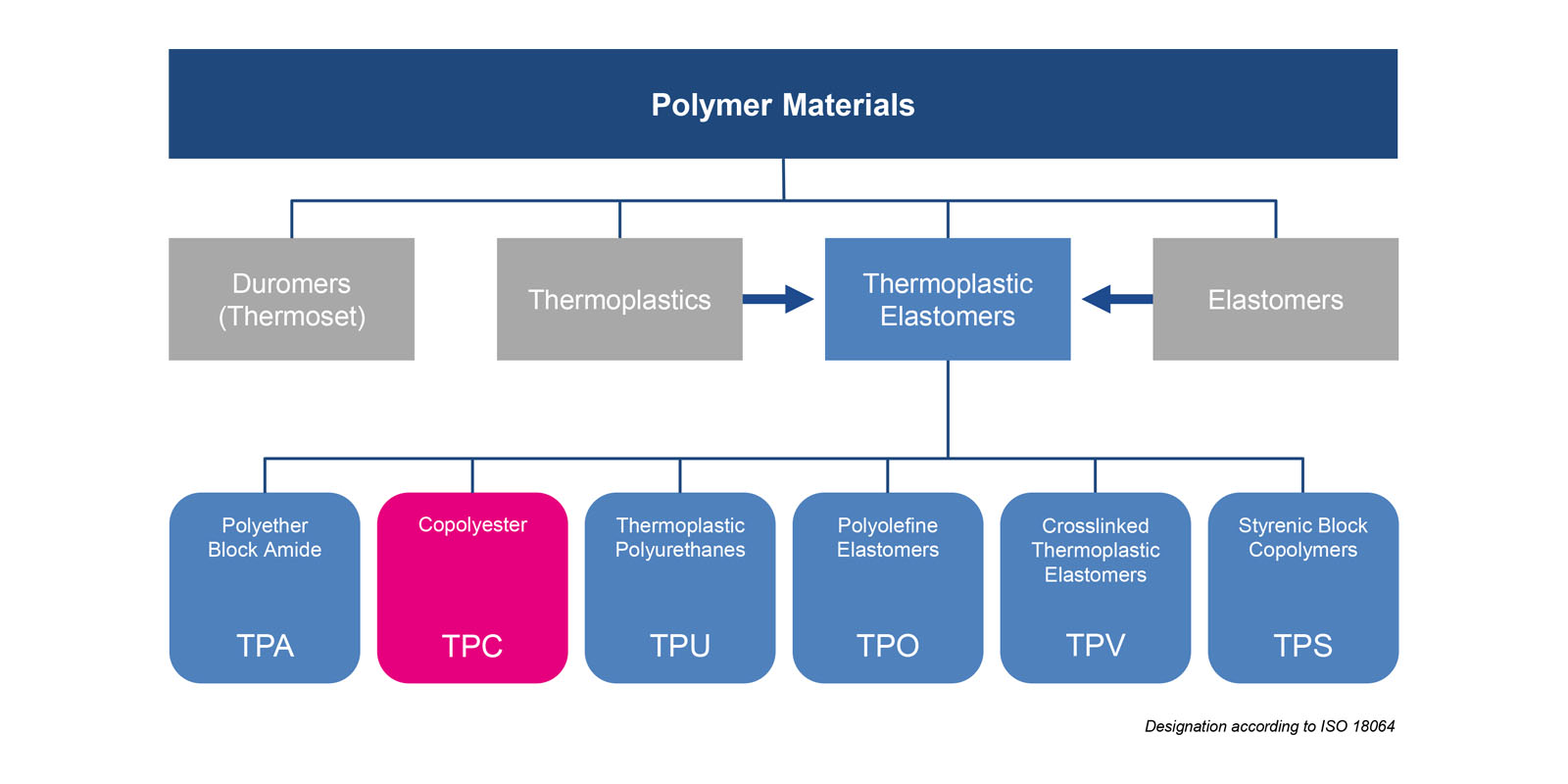ktpe_summary
- Thermoplastic polyester elastomers (TPC) are block copolymers of polyester and polyether.
- Depending on the mixing ratio of the two co-polymers, the materials are tough, flexible and also resistant to high temperatures.
- TPC can be processed by injection molding and extrusion.
- KRAIBURG TPE also offers compounds containing TPC.
What is TPC material?
Thermoplastic polyester elastomers (TPC) are block copolymers of polyester and polyether. TPCs form a subgroup of thermoplastic elastomers.
What are the properties of a TPC material?
Pure TPCs are particularly suitable for dynamic applications. Depending on the mixing ratio of the two co-polymers, the materials are tough, flexible and also resistant to high temperatures. Another advantage of these materials is their high internal strength and their good resistance to media, especially oils and greases.
How are TPC processed?
Like other groups of thermoplastic elastomers, TPC can be processed by injection molding and extrusion.
Find the right TPE solution for your application
Making sure you get the best results: the right materials solutions have been developed for each of your specific applications.
Does KRAIBURG TPE manufacture TPC?
In recent years, KRAIBURG TPE has specialized mainly in the development and production of TPS and TPV products. Nevertheless, KRAIBURG TPE also offers compounds containing TPC.










